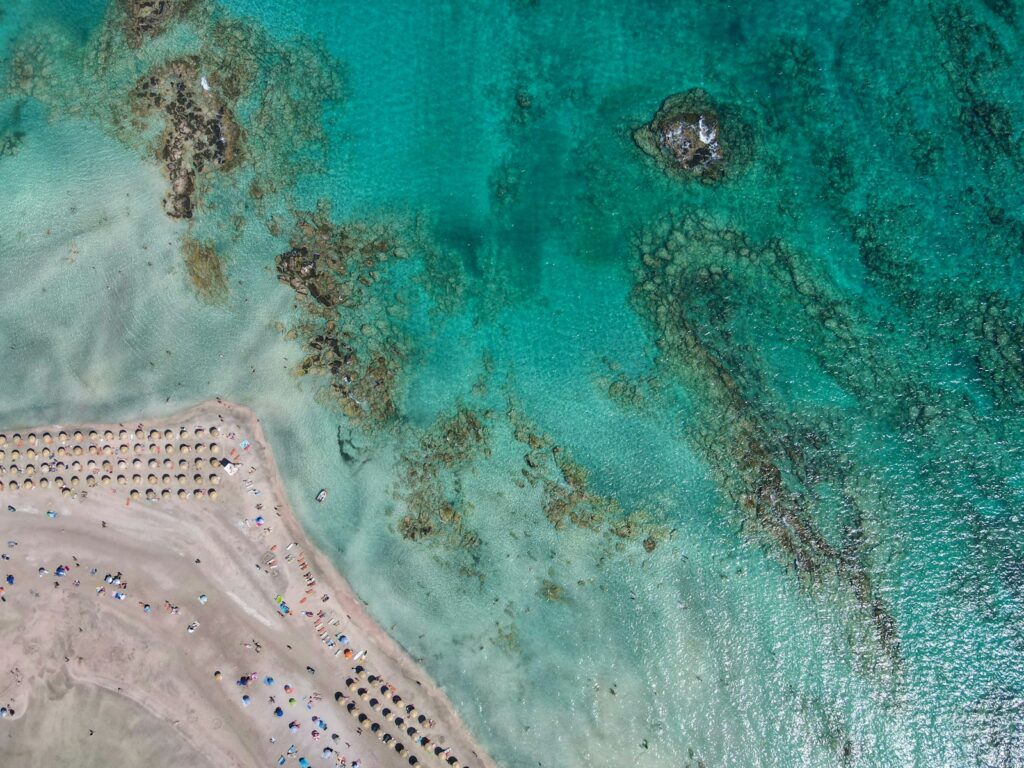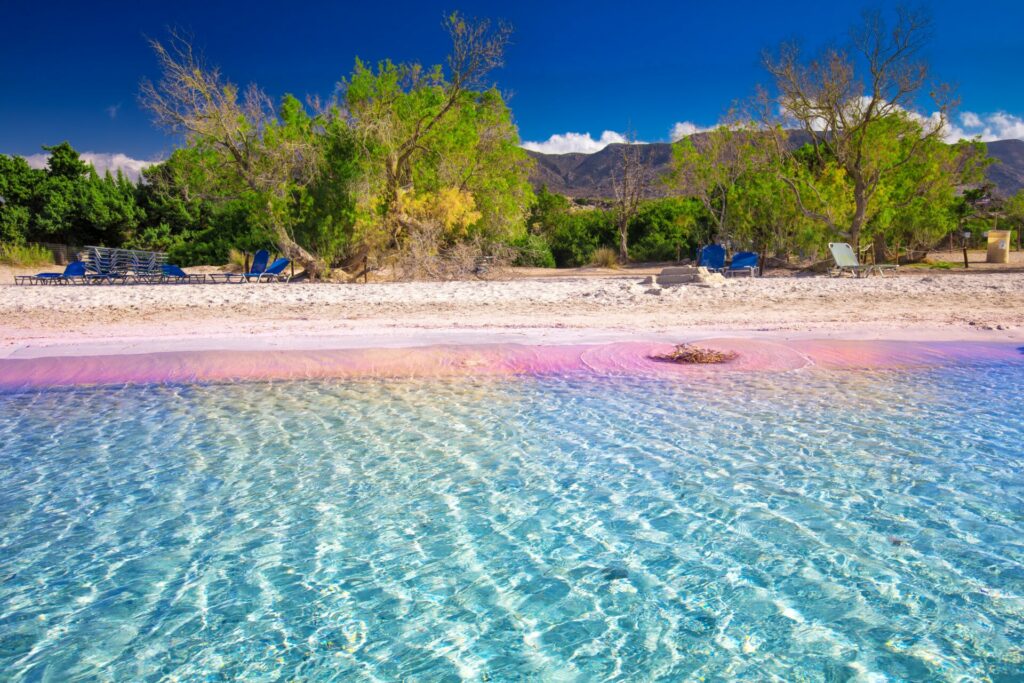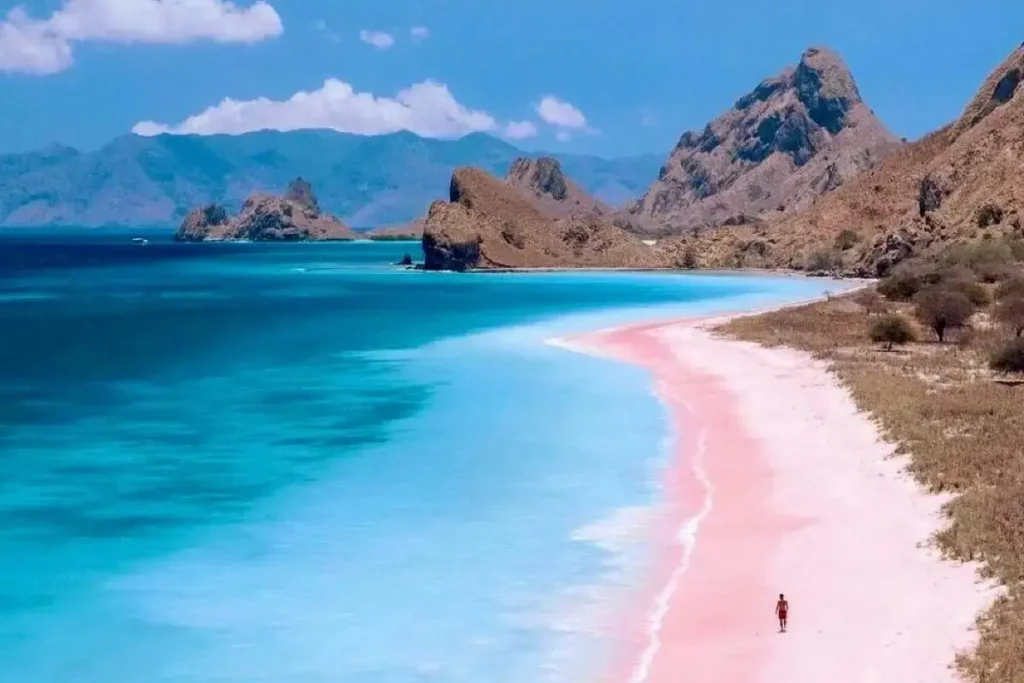Nestled in the southwestern corner of Crete, Elafonissi Beach stands as a testament to nature’s artistic prowess, where reality often surpasses expectations. This extraordinary destination, where crystal-clear turquoise waters meet pink-tinted shores, has captured the imagination of travelers worldwide. Discover this magical destination and understand why it’s considered one of Greece’s most spectacular natural wonders.
Table of Contents
A Rich Historical Legacy

The history of Elafonissi stretches back to ancient times when the area was known as Mousagores. This name originated from a sanctuary dedicated to Apollo Mousagetis that once stood on the islet. In ancient Greek mythology, “Mousagetis” meant the leader of the Muses, the deities who played their enchanting music to soothe the gods and calm the waters of the Mediterranean Sea. This historical connection adds a layer of cultural significance to the already mesmerizing natural beauty of the location.
Natural Wonders and Unique Characteristics
What truly sets Elafonissi apart is its remarkable natural features. The beach is actually a peninsula that can be reached by walking through shallow waters, creating a unique lagoon-like environment. The most striking feature is, undoubtedly, its famous pink sand. This natural phenomenon occurs due to millions of crushed seashells mixing with the white sand, creating a subtle yet magical pink hue that seems to shift with the changing light throughout the day.
The waters surrounding Elafonissi are a spectacle in themselves. Crystal-clear and remarkably shallow, they create perfect conditions for both families with young children and those seeking to explore the underwater world. The warm, gentle waters maintain comfortable temperatures throughout the summer months, making it an ideal destination for extended beach days.
Ecological Significance
Elafonissi is more than just a beautiful beach; it’s a protected Natura 2000 area, home to a diverse ecosystem. The area features rare species of flora and fauna, including:
The white sand dunes host delicate white lilies and juniper trees that have adapted to the coastal environment. Cedar trees dot the landscape, providing natural shade and adding to the area’s unique character. The beach is also a sanctuary for loggerhead sea turtles and various species of migratory birds, making it an important conservation site.
Seasonal Changes and Best Times to Visit

The beach transforms throughout the year, offering different experiences across seasons. During spring (April-May), wildflowers bloom across the dunes, creating a colorful carpet that contrasts beautifully with the pink sand. Summer (June-September) brings perfect swimming conditions with water temperatures reaching their peak. Early autumn offers a more serene experience with fewer crowds while maintaining pleasant conditions.
Practical Information for Visitors
Getting to Elafonissi requires some planning, but the journey is part of the adventure. Located approximately 75 kilometers from Chania, the drive takes you through some of Crete’s most spectacular landscapes. The winding road offers breathtaking views of the coastline and passes through traditional villages where you can experience authentic Cretan culture.
For the best experience, consider visiting during the early morning or late afternoon hours. This not only helps avoid the peak heat of the day but also provides the best lighting for photography. The pink hues of the sand appear most vibrant during these times, creating perfect photo opportunities.
Conservation and Responsible Tourism
As a protected area, Elafonissi requires visitors to practice responsible tourism. The delicate ecosystem that creates the pink sand is sensitive to human impact. Visitors are encouraged to:
Stay on marked paths to protect the dune system Avoid removing any sand or shells from the beach Use environmentally friendly sunscreen to protect marine life Properly dispose of all waste and help maintain the beach’s pristine condition
Local Amenities and Services
While Elafonissi maintains its natural character, basic amenities are available for visitors’ comfort. Several local facilities provide essential services, including:
Small tavernas serving traditional Cretan cuisine Basic shower and changing facilities Umbrella and sunbed rentals Limited parking facilities
Weather and Climate Considerations
The Mediterranean climate provides ideal beach conditions throughout most of the year. Summers are consistently warm and dry, with temperatures ranging from 25-35°C (77-95°F). The water temperature remains pleasant from May through October, making these months ideal for swimming and water activities.
Planning Your Visit
To make the most of your Elafonissi experience, consider booking your trip during the shoulder season (May-June or September-October) when you can enjoy the beach’s beauty without the peak summer crowds. The weather remains favorable during these periods, and the reduced visitor numbers allow for a more intimate experience with this natural wonder.
Accommodation Options

While Elafonissi doesn’t have beachfront hotels, several charming accommodations can be found in nearby villages. These range from traditional guesthouses to modern boutique hotels, all offering authentic Cretan hospitality. Many visitors choose to stay in the broader Chania region, making day trips to Elafonissi part of their broader Cretan adventure.
Conclusion
Elafonissi Beach represents more than just a beautiful coastline; it’s a unique convergence of history, natural beauty, and ecological significance. Whether you’re seeking a peaceful retreat, a photography paradise, or a family-friendly beach destination, Elafonissi offers an unforgettable experience that captures the essence of Crete’s natural wonders. Plan your visit today and discover why this pink paradise continues to enchant visitors from around the world.